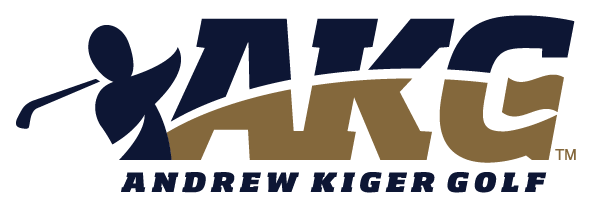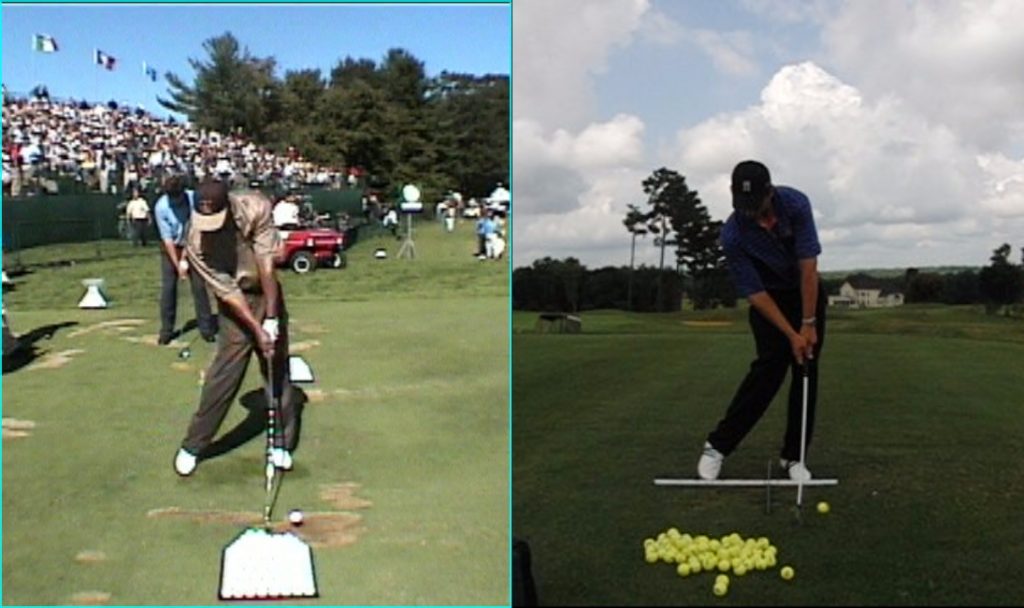Top Ten Fundamentals of the Golf Swing
The golfing legend Jack Nicklaus said several times that a player should “Learn the fundamentals of the game and stick to them. Band-Aid remedies never last.” The best way to get better at golf is to find a PGA professional who will teach you the game from the ground up. With a firm foundation your golf swing will be built to last. Below is a list of fundamentals that I believe are the most important and if practiced with precision will significantly lower your scores.
1.Impact-
Throughout the years the champions of this game have always had great impact positions that have similar traits. The shaft has leaned forward to the target, the right wrist has been bent, and the left wrist has been flat. Achieving this position is a result of sound mechanics throughout the “motion” of the swing. To achieve better impact positions I suggest that the student buy an impact bag or work on their chipping technique with preset impact alignments. Doing so will help ingrain the feeling of solid impact and will transfer into the full swing by feeling the alignments that where trained.
2. Grip-
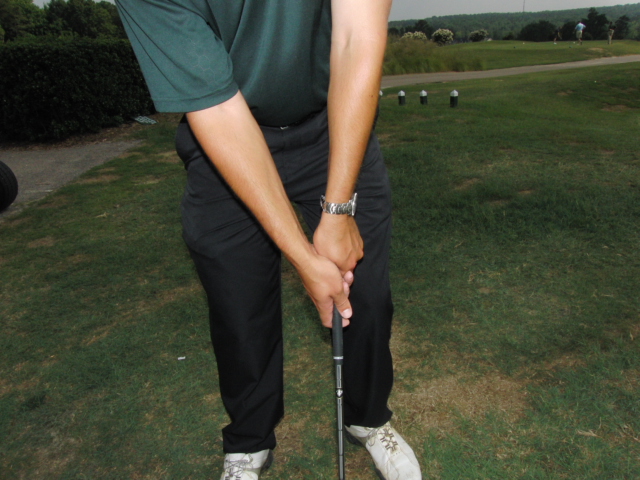
This is the second most important fundamental because it is the only connection between you and the club. How you grip directly correlates to how you will swing the club. The Picture below is a great start in forming your golf grip. The first step is to grip the club more in your fingers by placing the grip under the butt of the palm pad and across the base of the fingers. Now that the club is more in your fingers make sure that the orientation of your left wrist is correct. This can be checked by making sure the v of your left forefinger and thumb point to the right shoulder at address. You will also see at least two knuckles on your left hand if done properly. The right hand and trigger finger are positioned on the side of the shaft with a v formed with the thumb and forefinger pointing towards the right shoulder as well.
3.Aim-

Not knowing the influence of this fundamental will be costly. A player must understand how the club should look at address to play the shot they intend to play. Once the clubface is aimed correctly and consistently in the right direction the swing in turn becomes more consistent. Much like a railroad track align the clubface towards the target and then align your body parallel left of the target.
4. Ball Position-
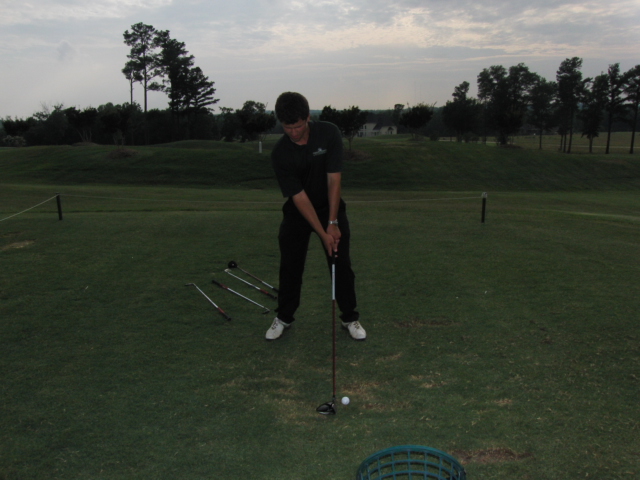
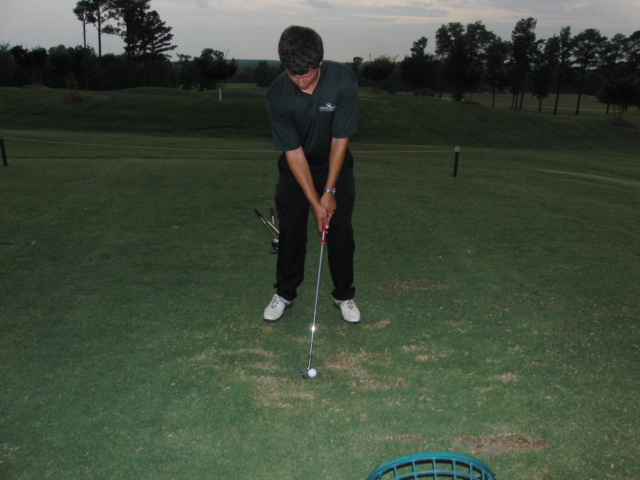
Ball position determines where and how the golf club will bottom out in your swing as well as the swing path and club face angle the clubface will have at impact. Placing the ball too far back in your stance will cause the path to come too far from the inside of the target line, as well as an open the club-face, and steepen your angle of attack. Placing the ball too far forward in your swing will cause the club to come too far from the outside of the target line, as well as a closed club-face, and topping. The ball position varies from irons to woods. For a driver the ball should be placed just inside of the left heal and for a pitching wedge should be somewhere in the middle of your stance. It is important to note that different swing styles have different ball positions and a PGA swing coach can help you determine what is right for you.
5. Posture-
Poor posture causes a lot of bad habits in the golf swing. If the knees and hips are not in their proper forward flexion the body and the golf swing will make an abundance of compensations and cause contact inconsistency. Start with your back straight and then bend your knees and hips. This position will look much like the ready position in tennis returning a serve, and defending another player in basketball.
6. Swing Plane-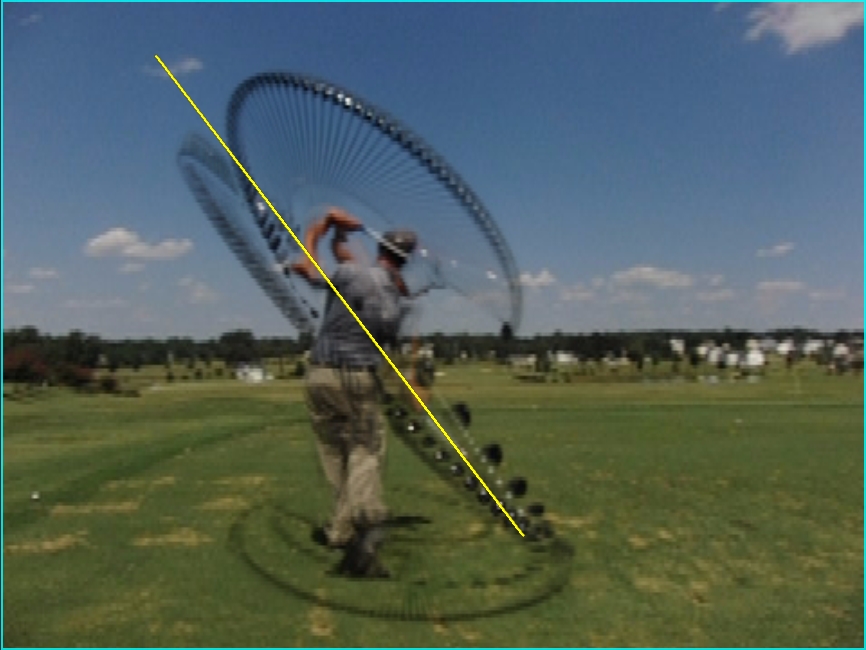
Swinging the club on plane is the most efficient way to make solid contact and have consistency with the path of your club. The golf swing travels on a plane similar to a roof top. If you swing on a flat plane like a table top or on steep plane like a wall your golf swing will be difficult to repeat and solid shots will be hard to find.
7. Steady head/Pivot-
Make sure your pivot has a good shoulder turn that keeps your head close to the center of your stance. There is room for movement in the backswing but it should always be kept to a minimum to keep your swing simple and easy to repeat. Another important part of the pivot is the weight shifting forward in the swing. This is caused by the hips shifting toward the target , turning, and then thrusting upwards. This is a must to get your hands in front of the ball at impact and will improve your downward strike.
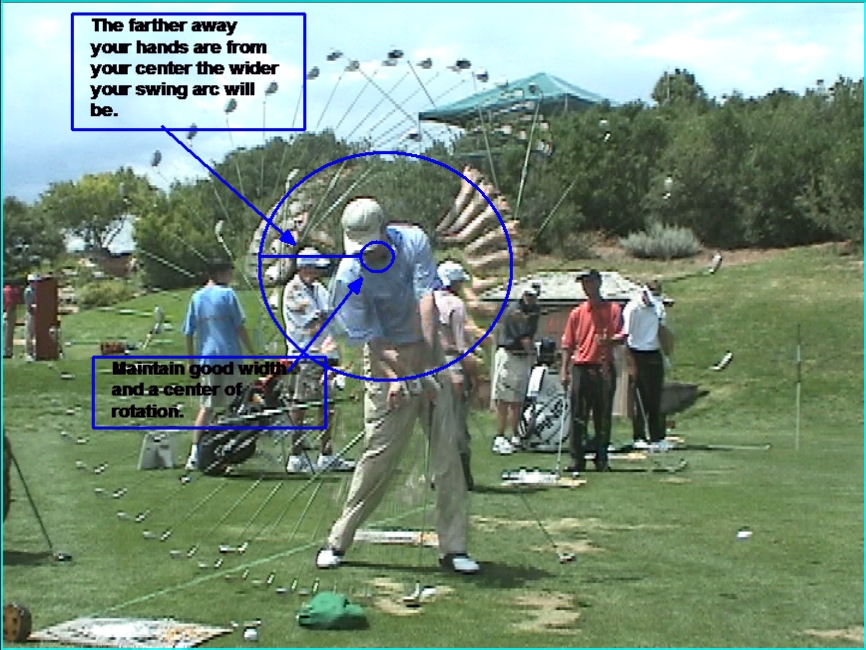
8. Width-
In the backswing and downswing the width of your swing is mightily important. When the right arm bends too much in the backswing the distance of your club away from your center (head) shortens causing a breakdown of the left arm. With a bent left arm coming into impact you either have to bend over from the hips more at impact (detrimental to power) or time the straightening of the left arm perfectly for solid contact (tendonitis in the elbow as well as tops and fat shots). To improve your width try to keep your right arm straighter in the backswing keeping the handle of the club a reasonable distance away from your right shoulder. (sorry lefties this would be the opposite for you)
9. Balance-
This fundamental is vital to achieving both power and accuracy. Looking at champion golf swings you will find that all the greats have had impeccable balance in their feet. There are several ways to work on your balance but my favorite is using balance discs with a weighted club. Balance discs force you to keep your weight in the center (arches) of your feet while the weighted club will pull against you causing your proprioceptors (balance muscles) to react. The stronger these muscles become the better your balance will be.
10. Rhythm-
Swinging in rhythm means that you are timing your motion in a way that brings about the best possible impact position and alignments with the appropriate amount of force for the shot you are playing. Swinging the club too quickly or too slowly are both detrimental to your golf game. Many tour players have used metronomes to insure their stroke is moving at the appropriate speed that optimizes control and power. Work with a coach to develop your rhythm because each individual is different and should have a customized approach that fits their swing the best.
Practice these fundamentals and strive to achieve them one at a time. Start with a sound impact position and work your way down the list all the way to rhythm. With the help of a PGA professional who knows how important the fundamentals are you can achieve your greatest potential in the game and finally win that club championship, captains choice event, or 25 cent Nassau with your buddies on Saturday.
Good luck and I look forward to seeing everyone on the lesson Tee.
Andrew Kiger

